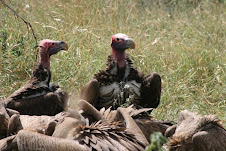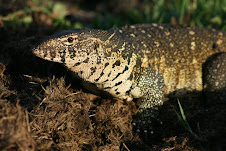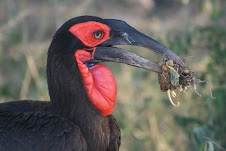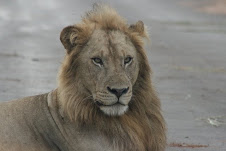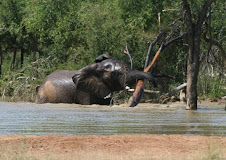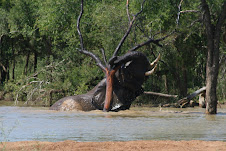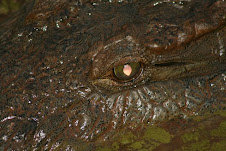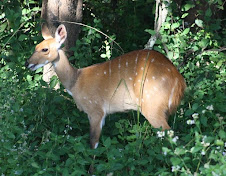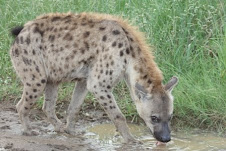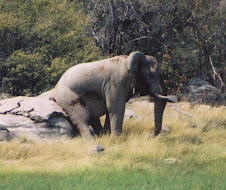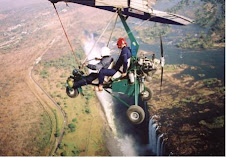A passionate and enthusiastic individual who loves Africa and its wildlife who has a well developed practical awareness of the different cultures and conservation issues. Has travelled extensively in Africa and has experience of being a volunteer on several conservation projects, working on own initiative as a leader or part of a team to achieve demanding goals in extreme, testing situations. Is a flexible and experienced multi-skilled maintenance engineer and technical trainer.
EXPERIENCE PROFILE
Volunteer experience - Botswana. Cheetah Botswana at Mokolodi. January 2005
· Assisting vet in minor operations including ‘work up’ on young cheetah
· Vehicle maintenance. Maintenance of cars since the age of 12.
· Building and maintenance of animal pens and camp site
· Radio tracking of collared Cheetah at Jwana
· Feeding and care of Cheetah in captivity
· Mapping of game park and use of GPS.
· Education of local farmers on stock management.
ECO training and FGASA level 1 (Karongwi) August 2006.
4 weeks training in the bush to be field guide. Karongwi is a big 5 game reserve.
Subjects covered included, game walks, 4x4 driving, field guiding, animal identification, tracking, ecology, trees, plants, grasses, geology, weather, insects, reptiles, fire arms handling, navigation, astronomy.
KERI research on big 5 game reserve. September 2006.
4 weeks monitoring and tracking the big 5 in a 10,000 Hectare game reserve.
This comprised of going out twice per day and radio tracking all the collared animals in the reserve, which included lion, cheetah, elephant and hyena. Data collection on the animals included GPS, condition, and locations of other animals. This data was then entered onto the computer for data analysis using ARC view GIS and Datalinx. This determines the home ranges and territories of the animals.
Rhino Rescue (Swaziland) November 2006.
5 weeks working as game ranger//scout at Mkhaya game reserve in Swaziland.
This included tracking and monitoring both black and white Rhino whilst on foot. Approaching and identifying each animal and assessing their condition.
Carrying out anti poaching patrols and snare sweeps.
Building of bomas for capture and culling of impala and also for live capture of Zebra, Impala and Nyala.
Capture of female Rhino for medical attention.
Living rough in the bush.
Reptile project Swaziland. December 2006.
3 weeks at Mlilwane to identify species of reptiles in the park.
Included capture and release of Boomslang and night adder.
Manzini Youth Care December/January 2006/2007 (7 weeks)
· Helped 130 street boys in Manzini (Swaziland) over the Christmas period. My idea was to educate the boys in conservation and ecology. Took several boys on several walks and identified many species of birds. Identified opportunities for boys to make and sell pictures of birds in local craft market.
PADI open water course Feb 2007.
· Qualified as PADI open water diver at Sodwana Bay South Africa.
Vegetation point survey at Hluhluwe/Umfolozi Feb 2007.
· Helped to re-establish photographic point survey of the vegetation in the reserve.
· Call up on lioness to remove radio collar.
African Impact Zimbabwe, Victoria Falls, Hwange and Matopas. March, April and May 2007.
1 week bush survival course.
Walking with lions. (Victoria Falls)
Training in animal tracking.
Water quality, pan depth and area surveys.
Trained to supervise snare sweeps and anti poaching patrols.
Boundary checks.
Trained in carnivore spoor transects.
Chilly project.
Red Cross child feeding program.
Vegetation survey.
Painted dog conservation Zimbabwe. Hwange May 2007.
Radio tracking of painted dogs.
Anti poaching patrols.
Kill site vegetation survey.
Wildlife Action Group (Malawi) August/October 2007.
Training local scouts in field guiding course. Assessed needs, designed course and implemented training and testing in Thuma Forest Reserve.
Carried out security survey of wildlife parks and reserves in southern and midlands of Malawi.
Helped WAG management to monitor local community activities. (Lodge site and design, bee keeping, chillies and renewable charcoal projects)
Large Carnivore Conservation Project (Malawi) October 2007/March 2008
Wrote project and gained financial support from MEET (Malawi Environment Endowment Trust) to look for large carnivores including painted dog and lion.
Monitored mammal population in Kasungu National Park with support from the Department of Parks and Wildlife and reported to department.
Carried out animal count with WESM.
Communications with local villages.
Anti- poaching patrols.
Baboon Release Program (Born Free Foundation and Lilongwe Wildlife Centre Malawi) October 2008/January 2009
· Planned, built and ran bush camp for 6 staff in Kasungu National park.
· Set standards, established budgets and trained staff in camp duties including basic bush awareness and use of GPS.
· Helped build release cages for baboons.
· Trained researcher with her duties.
· Travel Experience. Extensive coverage of the world while in the merchant navy. 3 overland trips to Africa
Trip 1. September 2001 21 days.
Kenya/Tanzania adventure.
Nairobi - Nakuru - Navasha - Lake Victoria - Serengeti - Ngorogoro crater - Kilamangiro - Zanzibar
Trip 2. August/September 2002 5 weeks.
As above. Plus Malawi - Lake Malawi - Zomba Plateau - Lilongwi - Lusaka - Kariba - Livingstone - Victoria Falls.
Trip 3. December/ January 2004/2005.
Zambia - Botswana - Namibia - South Africa.
Livingstone - Chobe - Okovanga Delta - Etosha - Skeleton Coast - Swakamond - Stelanbosch - Cape Town - Garden Route.
Practical skills
Very experienced in DIY including car maintenance, building work, electrical work and plumbing.
Trainer Experienced industrial trainer who implemented a factory wide strategy to increase operators and technicians skills by identify training needs, writing of training manuals and delivered training to over 400 personnel.
Team leading
Managed several teams of up to 60 personnel both in training and maintenance roles.
Career History
Mars Confectionery (Feb 1978 to July 2006)
Various jobs including maintenance engineer, training manager and operations manager.
Vanroy Pumps Ltd.
Pump Installation Engineer. Feb 77 - Feb 78
Royal Fleet Auxiliary (Merchant Navy)
Engineering Officer Sept 71 - Feb 77
Qualifications and Training
HND Mechanical Engineering (Marine Biased) Poplar Technical College. 1971 - 1975
HNC in Production Engineering Polytechnic of West London. 1990 - 1991
City and Guilds Part 11 Certificate in Electrical and Electronic craft studies in 4 components.
City and Guilds Steam plant maintenance.
Plus many other job related courses,
Leadership Skills
Influencing Skills course. Training for Trainers, Presentation Skills, Integro, 7 habits of highly effective people, Effective Communication, and Persuasive Communication. Continuous Improvements Techniques, Report Writing, Asset management, Cost Control. LEAN manufacturing and various job related courses.
Helping with local boy scout group for last 15 years. Neighbourhood watch coordinator.
Computer literacy.
Trained in word processing, spread sheets, powerpoint and most desk top packages as well as many industrial computers.
Personal Details
Date of Birth 22 September 1954
Marital Status Single
Children 2 sons, Thomas and Kevin ages 27 and 24.
Interests Nature and the environment, DIY, gardening, cycling, gym, scout association of GB.






















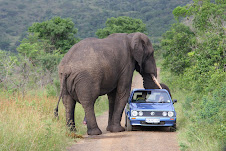.jpg)

